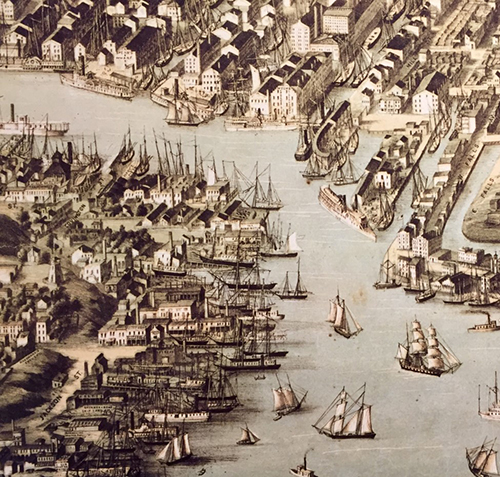In the 1790s, Maryland led the nation in shipbuilding; Baltimore was the undisputed leader of this industry on the Chesapeake Bay. Built to be swift and maneuverable in an era when speed on the high seas was synonymous with survival, Baltimore Clippers won the respect of the maritime nations of the world and helped establish Baltimore’s reputation as a center of commerce and the home of some of the world’s most creative shipbuilders.

The design for Baltimore Clippers, developed in, for, and unique to the Chesapeake Bay, expanded on the Southern Bay’s “Virginia Pilot Schooner” design, with larger hulls and more extreme sailing rigs. The improved vessels emerged from the shipyards of Fells Point in response to the need for fast ships that could elude the powerful, but lumbering, British naval vessels that would seize any American shipping bound for France or her Allies during the Napoleonic Wars of the early 19th Century. Besides the need for speed, a combination of geography, settlement patterns, and even weather contributed to the design of the Baltimore Clipper.
The Chesapeake Bay, the largest estuary in the United States, stretches 200 miles, but is surprisingly shallow, with an average depth is about 21 feet. The Chesapeake Bay also has about 24 navigable tributaries, meaning that navigating between towns, when water transportation was the easiest form of transport, entailed navigating long, narrow, and shallow rivers. So, a relatively shallow draft—the distance between the surface of the water and the lowest point of the vessel—was part of the design.
As for weather, winds on the Bay are often very light in the summer. Over time, Chesapeake Bay shipbuilders combined different facets of design to build ships best suited to the local sailing conditions. Baltimore Clippers were designed with a lot of sail area to catch light air.

Baltimore Clippers were sharp built with V-shaped hulls that both efficiently cut through the water and helped keep them from sliding sideways when their sails were full. These sleek, fast, and maneuverable vessels could sail closer to the wind than all of their contemporaries and faster than most of them. It’s no surprise then that Baltimore Clippers gained fame as privateers during the War of 1812—they could outmaneuver and sail faster than the full-rigged British ships.
Baltimore Clippers were fast, highly maneuverable sailing machines that employed the most advanced technology and design of their time. They reached their zenith between 1795, the unofficial re-commencement of naval hostilities between the U.S. and Great Britain, and 1815, the end of The War of 1812. After that time, changing economic and maritime conditions made them obsolete. The sacrifice of cargo space for speed in the design was also a major factor in their decline. They stand, however, as thoroughbred progenitors to a remarkable lineage of American sailing vessels.
The first Pride of Baltimore, launched in 1977 in the Inner Harbor, was the first Baltimore Clipper to be built in Baltimore in almost 150 years. Read more about Pride of Baltimore and Pride of Baltimore II, built to the design of the original Baltimore Clippers.
